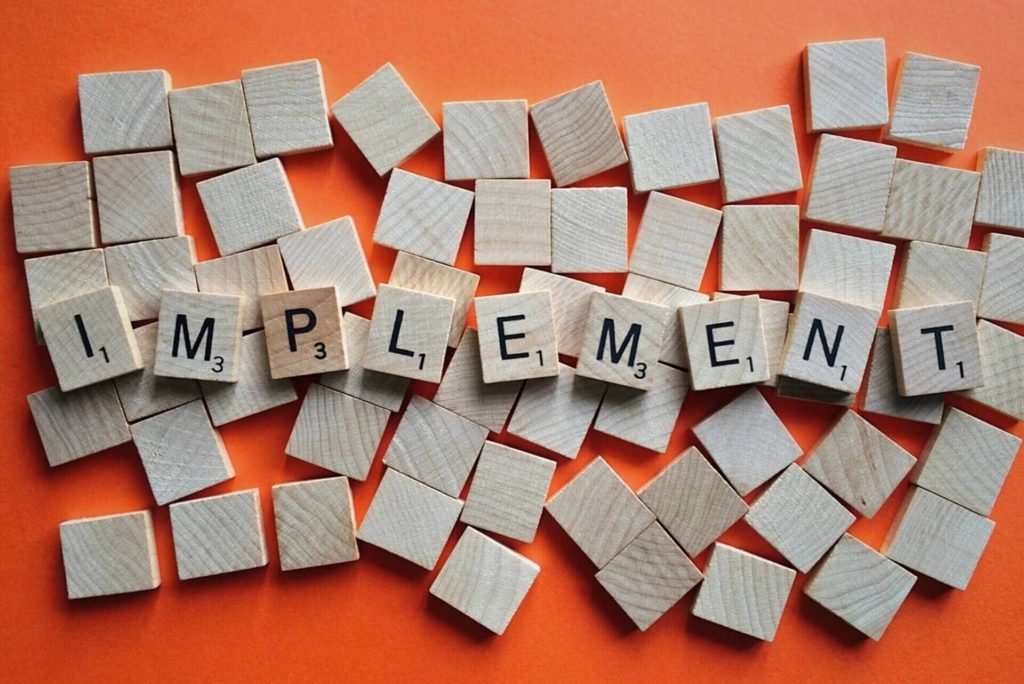The secret for building good habits that last is commonly known, but not commonly practiced. But before moving forward, let me ask you some questions:
- Do you have trouble sticking to the habits you want to incorporate into your life?
- Are you tired of breaking your good habits in the middle of it?
- Do you lose interest in the habit after a week?
- Are you super excited when you start a habit and unmotivated at the end?
If the answer is Yes to one of those questions, this article is for you.
Without further ado, let’s jump right into it.
In this article, we will cover:
1- The secret for building good habits that last
2- How long does it take to form a habit
The Secret for building good habits that last
Whatever your goals in life, including building good habits, the APE System can help you reach them.
The APE stands for:
- Assessing
- Planning
- Executing

1- Assessing
The mistake most people do is to start a habit without giving that much thought to it. This step can help you start the right habit, at the right time, in the right place. Don’t skip assessing. It will make the difference between breaking a habit or make it last.
First things first, set a time for thinking. Make sure you write down your thoughts.
Thinking is nothing more than asking questions. Here are some questions you might consider asking yourself:
- What do you want to achieve?
- Why do you want it?
- What obstacles have you faced, or you might face, as you seek to achieve your goal?
- What resources do you currently have that will help you achieve your goal?
A) What do you want to achieve?
For any habit (goal) to happen, you need a clear definition. Clarity is power. Be as specific as possible. Your goal should fit in a short-term framework, 30 days to 12 months, no more.
For instance, let’s say your end goal (long term) is to travel more. You need a job that gives you more free time or more money. You will need to learn a new skill. So your specific goal can be ‘blocking one hour a day to learn a new skill’.
B) Why do you want it?
The idea here is to know your motivations, your meaningful purpose of adopting a new habit. If you know how the habit will affect other aspects of your life, it becomes easier to make it stick.
When the ‘Why’ is strong, the ‘How’ becomes easy. As the German philosopher Nietzsche said:
“He who has a why to live for can bear almost any how.”
C) What obstacles have you faced, or you might face, as you seek to achieve your goal?
You need to know what prevented you in the past from adopting the habit, or what can prevent you in the future.
Each one of us has already key information about habits, either the bad ones and how we made them stick, or the good ones and how we succeed or failed to implement.
This is a valuable experience that needs to be used. We can’t get rid of our weaknesses, but we can neutralize them. In other words, we want to create an environment where it’s impossible to break the habit.
Let’s go back to the previous example of ‘blocking one hour a day to learn a new skill’, what might be the hindrances are phone and mails distractions, friends calling you to hang out, noisy environment, no fixed hour to work, and so one. For the moment, just make a list.
D) What resources do you currently have that will help you achieve your goal?
This question is about your internal and external resources. It’s an inventory of the available assets that can support you in your goal- strengths, skills, and tools.
To implement any habit, you need to act form a position of strength, and stay away from situations that trigger your weaknesses.
For the tools, it can be anything: a library card if you want to read, an alarm-clock to detach from your phone, a yoga mat to train at home…

2- Planning
How many of you think that, just by asking those 4 questions, you enter a whole new game? You have control over the elements- the what, the why, the obstacles and the resources are known.
What’s next? Putting in place a specific action plan you can follow to achieve your goal.
The plan shows how serious you are about your goal. A good plan has at least 4 characteristics.
A) Realistic
You don’t want to plan training at 6 am if you know it’s hard for you to wake up. Plan it later during the day.
B) For the long term
You must see yourself doing the habit even after achieving your goals. You don’t want to set time for learning once in a while, you want to keep learning until you die.
C) Obstacle free
It is much easier to stick to the habit when your environment is supporting you. You don’t want to fight constantly against your weaknesses. It’s energy-consuming with a high probability of failing. It’s easier to diet without ice cream in your fridge.
D) Precise
When you’re attempting to form a new habit, it makes it easier to have the same routine at a similar time. Also, you need to have alternatives if things don’t go as you planned. If you are lazy to go to the gym when it’s raining outside, you need to make it possible to train at home.
Finally, you need to be crystal clear beforehand about the minimum you will do to keep the habit going. Small is achievable. It is always better setting the bar low and do more if you feel like, than setting the bar high and give up after a few days.
Here’s a tool that can make it easier for you to be precise. In his book “Atomic Habits”, James Clear calls it Implementation Intention. Before starting the habit, fill out this sentence:
I will [BEHAVIOR] at [TIME] in [LOCATION].
It looks something like this:
- I will read for 10 minutes at 9 pm in my bed.
- I will meditate for 5 minutes at 7 am in the kitchen.

3- Executing
This is the last part of the secret for building good habits that last. After you assessed and planned, it’s time to act. You are ready now to start any habit, small or big. From my experience, I would recommend executing the habit in 2 phases. The first phase is for trying your plan, the second one it’s for effectively starting the habit.
A) Try your habit first
No matter how good our plan is, sometimes we fail to capture the full picture. Obstacles we didn’t consider might emerge.
The trying phase allows you to test your habit in real life. During this period, you can adjust your habit until it fits perfectly your situation.
For example, if you plan to meditate 5 minutes in the morning but you find it inconvenient, you might consider another time.
Play with the habit until you make the whole process smooth.
B) Set it and forget it
You can feel it when the new habit fits perfectly in your daily life- there are not that many frictions when you do it. The habit might be uncomfortable at the beginning, but it’s not supposed to be a chore.
Once you find the right time and the right place that works well for your habit, commit to it. It’s that simple. There is no magic recipe.
There is no need to count the days. If you commit to your system, you will keep getting results even after reaching your goals.
Every sports coach wants to win (the goal), but the way the coach plans, prepares, recruits, manages people (the system) is what makes the winner.
This is the secret for building good habits that last. It’s all about the process. Set the system, and forget about it.
How Long Does it Actually Take to Form a New Habit?
You might ask yourself: why I need to assess and plan when I can just jump on the habit and start straight away?
It’s a legitimate question. Here’s why: it might take you more time than you planned to make your habit automatic (doing the action without giving it that much thought).
Automaticity is a good threshold to reach because you won’t need to fight with yourself to perform the habit. However, if you need to count the days, your task will become harder and frustrating.
The common belief is ‘it takes 21 days to form a habit’. In reality, it can be much longer. That’s why you need a solid foundation (assessment & planning) to stick to your habit, no matter how long it takes to make it automatic.
1- From 18 to 254 days
In a study published in the European Journal of Social Psychology, the researcher Phillippa Lally and her team came to this conclusion:
“The time it took participants to reach 95% of their asymptote of automaticity ranged from 18 to 254 days; indicating considerable variation in how long it takes people to reach their limit of automaticity and highlighting that it can take a very long time.”
The implication of this research is: if you expect to reach a level of automaticity in 3 weeks and it does not happen, you will probably give up the habit way too soon.
For this reason, the focus needs to be on the system, not on the number of days you stick with the habit.
You probably heard people saying things like “it’s been 2 months without smoking” or “first month on diet”. After a while, they break their good habits.
The number of days doesn’t really matter; what matters is the system in place.
2- Can you stop your good habit and still benefit from it?
In one of the episodes of the Tim Ferriss ’podcast, Arnold Schwarzenegger said that he practiced Transcendental Meditation for 1 year. And to this day, he’s still benefiting from his 1 year of intense daily meditation.
So the question arises, can we stop a habit and still get the reward of it?
My best guess is yes.
I remember that reading in English was hard for me at the beginning. I finished reading my first English book in the summer of 2018. So I had the habit of watching motivational speeches to keep me going. It acted as a daily reminder. After a while, I didn’t need them. The habit was set and I’m still reading today.
Conclusion
Now you have it- the secret for building good habits that last. Whatever the habit you try to implement in your life, big or small, the best strategy would be building a solid foundation (assessing and planning) to sustain your habit. Starting good habits that last is easier with the right system in place. The rest is history: build the system, try it, and stick to it.
